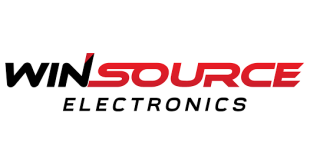 Dialog Semiconductor, a provider of highly integrated power management, AC/DC power conversion, solid state lighting (SSL) and Bluetooth Smart wireless technology, has announced three additions to its SmartBond family of ultra-low power, Bluetooth Smart System-on-Chip (SoC) integrated circuits. The devices, aimed at high volume, high growth consumer markets, are the smallest and lowest power wireless connectivity solutions for the Internet-of-Things (IoT). Versions optimised for wireless charging and remote control units (RCUs) address markets that will ship over 1.5 billion units per annum within 4 years.
Dialog Semiconductor, a provider of highly integrated power management, AC/DC power conversion, solid state lighting (SSL) and Bluetooth Smart wireless technology, has announced three additions to its SmartBond family of ultra-low power, Bluetooth Smart System-on-Chip (SoC) integrated circuits. The devices, aimed at high volume, high growth consumer markets, are the smallest and lowest power wireless connectivity solutions for the Internet-of-Things (IoT). Versions optimised for wireless charging and remote control units (RCUs) address markets that will ship over 1.5 billion units per annum within 4 years.
“Our first SmartBond device, the DA14580, propelled Dialog rapidly into market leadership, thanks to its unique combination of exceptionally small size and minimal power consumption. We’ve been particularly successfully in human interface devices (HID), proximity sensing, medical devices, and smart home applications. The new SoCs will accelerate our market share growth as we help customers in other fast-growing consumer markets achieve their design goals rapidly and reliably,” said Sean McGrath, senior vice president and general manager, Connectivity, Automotive & Industrial Business Group at Dialog Semiconductor.
“In the wireless charging and RCU markets, Bluetooth low energy is the ideal protocol for control and communications because it’s ubiquitous in smartphones, tablets, smart televisions and a host of other consumer devices. As we extend our SmartBond product family, we will continue to make it easier for customers to integrate these ultra-low power, fully hosted Bluetooth solutions so that they can offer consumers unrivalled battery life with their products,” he added.
The DA14581 is optimised for loosely coupled, highly resonant inductive charging based on the A4WP standard. In order to guarantee charging in all conditions, even when the battery is dead, the DA14581 is capable of booting up in under 50 ms when used in the Power Receiving Unit. When used in the Power Transmitting Unit, the optimised device can track and control the charging of 8 devices simultaneously. Optimised code for HCI, which provides standardised communication between the host stack and controller, can now be programmed into One-Time-Programmable (OTP) memory enabling users to create pre-programmed HCI products to be used with external microcontrollers and third-party stacks. Market analyst Darnell says that by 2020 sales of wireless charging receiver and transmitter chips will reach $2.8bn.
Integrating an analogue audio codec with native support for microphones, the DA14582 is optimised for RCUs that use voice recognition, motion and gesture recognition to control next-generation Smart TVs and set-top boxes. As set-top boxes and smart televisions begin to have built-in Wi-Fi and Bluetooth Smart functionality, Bluetooth Smart is replacing Bluetooth Classic in remote controls due to lower power consumption and reduced connection latency.
The third new device, the DA14583, is a SmartBond SoC with 1 Mbit (128 kByte) of flash. This memory variant of the DA14580 enables customers to keep their deployed products up-to-date through software upgrades Over The Air (OTA). The part is pin-compatible with the DA14580 OTP version. This provides designers with a cost reduction path from flash to OTP once they have matured their application software, particularly if they need OTA upgrades during the initial phase of development and production.
SmartBond SoCs integrate a Bluetooth low energy radio with an ARM Cortex-M0 application processor and intelligent power management. Needing only five external components for a complete standalone Bluetooth Smart solution, the devices offer an unmatched level of system integration combined with the world’s lowest power consumption. The device’s ARM Cortex M0 processor and full set of digital and analogue peripherals are accessible via up to 32 GPIOs, which is ideal for all Bluetooth Smart applications. Since the introduction the DA14580 in January 2014 with the best power performance on the market, Dialog has achieved a further 20% reduction in power consumption for all devices in the family.
SmartBond development kits come with a power profiler, to enable power-optimised coding, and Dialog’s SmartSnippets software development environment, which is based on Keil’s µVision tools. The kits include example application code for both embedded and hosted modes to accelerate product development.
 CIE Components in Electronics
CIE Components in Electronics



